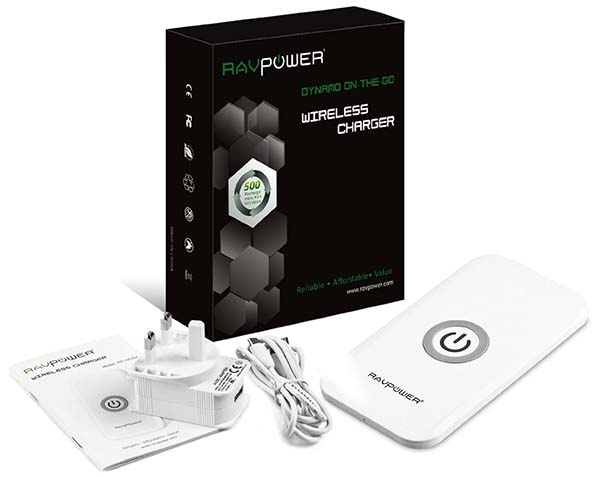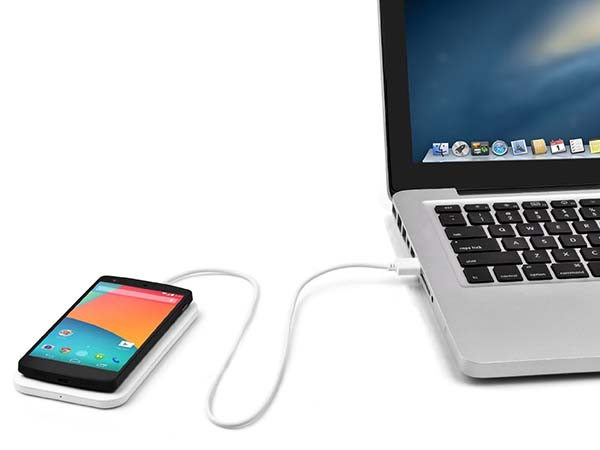RavPower Qi Wireless Charger Review
Qi wireless charging has been around for a couple of years now, whilst it’s supported by the Lumia range of Nokia phones and in Google’s Nexus devices, it hasn’t really caught on. Here to help try and change all that is the RavPower Wireless Charger.
 Put simply, the underlying technology works by electromagnetic induction between two coils; a transmitting coil within the charging unit and a receiver coil within the phone/tablet. Delivering an alternating current in the transmitter coil generates a magnetic field which induces a voltage in the receiver coil. This voltage is then used to charge the battery. For efficient power transfer the distance between coils must be very small (not exceeding the diameter of the coils).
Put simply, the underlying technology works by electromagnetic induction between two coils; a transmitting coil within the charging unit and a receiver coil within the phone/tablet. Delivering an alternating current in the transmitter coil generates a magnetic field which induces a voltage in the receiver coil. This voltage is then used to charge the battery. For efficient power transfer the distance between coils must be very small (not exceeding the diameter of the coils).
The RavPower Wireless Charger like other Qi chargers requires a constant main supply and should be in direct contact with the smartphone or other compatible device, meaning phone cases should be removed. The wireless charger outputs 5V/1A which the same as the standard micro-USB chargers, however, the wireless charging will take longer, since there are losses of energy in the power transmission between the coils. My Nexus 4 took 2 hours 50 mins to charge using the RavPower, usually from the standard Nexus charger it takes just over 2 hours.
So if the wireless charger takes longer, what’s the point? Well, the RavPower and other similar products provide ultra-convenience. It’s meant for those that can’t be away from their phone for too long. Conceptually your meant to set your phone down for a few minutes between tweets and status updates to allow it to charge, without the annoyance of having to constantly fiddle with a USB cable every time you check Facebook.
The design of the RavPower Wireless Charger is rather slick, with its all white finish and slim profile. At it’s centre is a circular non-slip grip pad which is meant to stop the phone from falling off when charging. It performs the role rather well but your phone will slip off at more obtuse angles and, unlike Google’s own Qi wireless charger, it is not magnetic. Note that this charger is cheaper than Google’s or Nokia’s solutions.
A minor complaint I have of the RavPower charger is that it makes an annoying audible tone when it is initially aligned with the phone to indicate that the device is charging, despite the fact there is an LED indicator which also signifies charging by alternating between a red and green light. This only becomes an annoyance because it’s entire concept relies on you removing your phone so that minutes later you set it back down again.
Another small issue is that the power consumed when not charging and left in idle mode, is unknown. The provided user manual only states “very little power consumed in idle mode”. Perhaps I’m nitpicking but it doesn’t sound very scientific, especially since the charger will heat up over time, meaning it could potentially be a safety hazard.
Overall I don’t have any real issues with this charger, it works as you’d expect. It’s rather gimmicky but the underlying concept is certainly interesting. It is still early days for Qi technology since it’s not yet widely adopted; to use this charger with an iPhone or Samsung Galaxy either an external case is required or a third-party Qi receiver must be installed. I feel this technology has promising prospects and I can envision this as something very useful if integrated into public spaces, for example, built-in to tables at coffee shops or restaurants. Until then, the RavPower Qi Wireless Charger is still a neat, useful device.


